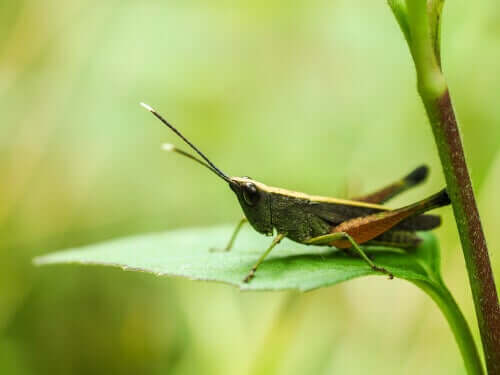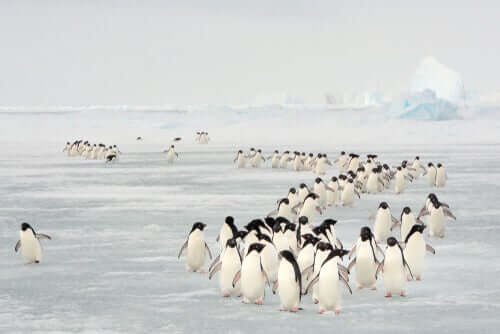Are All Animals at Risk of Extinction?

Did you know that there are over 25,000 endangered species, and that many of them probably won’t make it to 2050? That might have you wondering if all animals are at risk of eventual extinction, and if there won’t be a single one on the planet in the future. We’re going to try to answer that question today.
Endangered species: a big concern
According to the International Union for Conservation of Nature (IUCN), there are over 25,000 plants and animals at serious risk of extinction right now.
One of the most at-risk species is the Java Rhino, with only 50 of them still alive in their natural habitat (Indonesia). A major part of the problem is that people illegally hunt them because of the belief that their horns have magical properties.
The vaquita (a kind of porpoise) is another critically endangered species, with only 60 left in the wild. Their natural habitat is the northern part of the Gulf of California (Mexico). The main threat to them is that they frequently get caught in fishing nets.
Most people see grasshoppers as a plague. But there’s one subspecies, the Crau Plain Grasshopper, that’s on the IUCN red list because its habitat in France is being destroyed. If they disappeared, there would be some serious consequences for birds like the kestrel, which eat this kind of grasshopper.

Are all animals at risk of extinction?
If you’re feeling pessimistic, you might think that all animals are going to disappear from the face of the earth in a few years, if things keep going the way they are.
On the one hand, it’s true that the amount of species on the list goes up every year. On the other hand, the IUCN, which makes the list, says only about 25% of them are truly at risk of disappearing entirely.
Although modern human activity has played a large role (if not the only role) in causing animals to go extinct, there are also some species that are just more vulnerable. In some cases, this is part of what leads to their fate. But which species are those exactly?
1. Animals that live in a limited area
For example, animals native to a single place, like an island, are especially at risk because they can’t go elsewhere. Plus, not being in contact with any animals but the ones around them means that they’re vulnerable to any illnesses brought by new species.
2. Animals that migrate
We’re not just talking about birds. This goes for any animal that sets out on a long journey year after year, whether to get away from the cold or the heat. They’re at high risk because they need all the places they go to have specific living conditions.

3. Animals that need a lot of space
The main “weakness” of these wide-ranging animals is that they need a lot of territory to live their normal lifestyle. They might go hundreds of miles in a single season, for mating, for food, or any other reason. Some good examples are canines and birds of prey.
4. Large animals
Some of the most well-known endangered species are the polar bear, elephant, and rhinoceros. In the case of polar bears, global warming and the melting ice caps are the main problems. With the other two, illegal hunting and the destruction of their habitat are the big issues.
But there’s also another factor. Large animals need to eat a lot more food every day (or every season). As their ecosystem changes, they might end up having less food available than normal.
5. Animals that don’t reproduce enough
One example of this are gorillas, although hunting and a lack of trees are also a big reason they’re endangered. They put a lot of time and energy into their one child, which is dependent on its mother for several years. A female won’t get pregnant again during that time, and basically dedicates herself entirely to her child.
Some other species at risk of extinction are ones that live in stable environments. If that stability goes away, like it has with climate change, they can’t move forward with their normal life cycle (in the case of reptiles). Animals that form small groups are also at risk because they’re easier for hunters and predators to spot.
Did you know that there are over 25,000 endangered species, and that many of them probably won’t make it to 2050? That might have you wondering if all animals are at risk of eventual extinction, and if there won’t be a single one on the planet in the future. We’re going to try to answer that question today.
Endangered species: a big concern
According to the International Union for Conservation of Nature (IUCN), there are over 25,000 plants and animals at serious risk of extinction right now.
One of the most at-risk species is the Java Rhino, with only 50 of them still alive in their natural habitat (Indonesia). A major part of the problem is that people illegally hunt them because of the belief that their horns have magical properties.
The vaquita (a kind of porpoise) is another critically endangered species, with only 60 left in the wild. Their natural habitat is the northern part of the Gulf of California (Mexico). The main threat to them is that they frequently get caught in fishing nets.
Most people see grasshoppers as a plague. But there’s one subspecies, the Crau Plain Grasshopper, that’s on the IUCN red list because its habitat in France is being destroyed. If they disappeared, there would be some serious consequences for birds like the kestrel, which eat this kind of grasshopper.

Are all animals at risk of extinction?
If you’re feeling pessimistic, you might think that all animals are going to disappear from the face of the earth in a few years, if things keep going the way they are.
On the one hand, it’s true that the amount of species on the list goes up every year. On the other hand, the IUCN, which makes the list, says only about 25% of them are truly at risk of disappearing entirely.
Although modern human activity has played a large role (if not the only role) in causing animals to go extinct, there are also some species that are just more vulnerable. In some cases, this is part of what leads to their fate. But which species are those exactly?
1. Animals that live in a limited area
For example, animals native to a single place, like an island, are especially at risk because they can’t go elsewhere. Plus, not being in contact with any animals but the ones around them means that they’re vulnerable to any illnesses brought by new species.
2. Animals that migrate
We’re not just talking about birds. This goes for any animal that sets out on a long journey year after year, whether to get away from the cold or the heat. They’re at high risk because they need all the places they go to have specific living conditions.

3. Animals that need a lot of space
The main “weakness” of these wide-ranging animals is that they need a lot of territory to live their normal lifestyle. They might go hundreds of miles in a single season, for mating, for food, or any other reason. Some good examples are canines and birds of prey.
4. Large animals
Some of the most well-known endangered species are the polar bear, elephant, and rhinoceros. In the case of polar bears, global warming and the melting ice caps are the main problems. With the other two, illegal hunting and the destruction of their habitat are the big issues.
But there’s also another factor. Large animals need to eat a lot more food every day (or every season). As their ecosystem changes, they might end up having less food available than normal.
5. Animals that don’t reproduce enough
One example of this are gorillas, although hunting and a lack of trees are also a big reason they’re endangered. They put a lot of time and energy into their one child, which is dependent on its mother for several years. A female won’t get pregnant again during that time, and basically dedicates herself entirely to her child.
Some other species at risk of extinction are ones that live in stable environments. If that stability goes away, like it has with climate change, they can’t move forward with their normal life cycle (in the case of reptiles). Animals that form small groups are also at risk because they’re easier for hunters and predators to spot.
All cited sources were thoroughly reviewed by our team to ensure their quality, reliability, currency, and validity. The bibliography of this article was considered reliable and of academic or scientific accuracy.
- Baena, M. L., & Halffter, G. (2008). Extinción de especies. In Conabio. Capital natural de México.
This text is provided for informational purposes only and does not replace consultation with a professional. If in doubt, consult your specialist.








